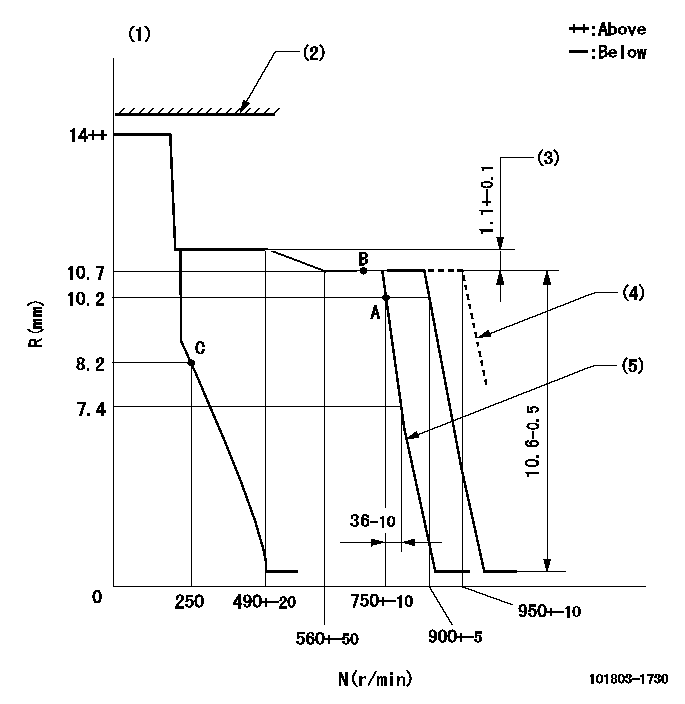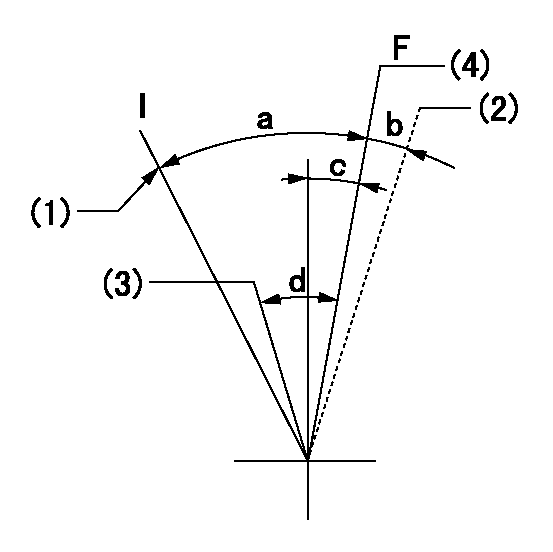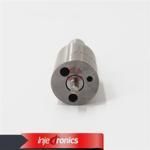Information injection-pump assembly
BOSCH
9 400 616 214
9400616214
ZEXEL
101803-1730
1018031730
MITSUBISHI
ME068099
me068099

Rating:
Service parts 101803-1730 INJECTION-PUMP ASSEMBLY:
1.
_
7.
COUPLING PLATE
8.
_
9.
_
11.
Nozzle and Holder
12.
Open Pre:MPa(Kqf/cm2)
21.6(220)
15.
NOZZLE SET
Cross reference number
BOSCH
9 400 616 214
9400616214
ZEXEL
101803-1730
1018031730
MITSUBISHI
ME068099
me068099
Zexel num
Bosch num
Firm num
Name
101803-1730
9 400 616 214
ME068099 MITSUBISHI
INJECTION-PUMP ASSEMBLY
8DC9 K
8DC9 K
Calibration Data:
Adjustment conditions
Test oil
1404 Test oil ISO4113 or {SAEJ967d}
1404 Test oil ISO4113 or {SAEJ967d}
Test oil temperature
degC
40
40
45
Nozzle and nozzle holder
105780-8140
Bosch type code
EF8511/9A
Nozzle
105780-0000
Bosch type code
DN12SD12T
Nozzle holder
105780-2080
Bosch type code
EF8511/9
Opening pressure
MPa
17.2
Opening pressure
kgf/cm2
175
Injection pipe
Outer diameter - inner diameter - length (mm) mm 6-2-600
Outer diameter - inner diameter - length (mm) mm 6-2-600
Overflow valve opening pressure
kPa
157
123
191
Overflow valve opening pressure
kgf/cm2
1.6
1.25
1.95
Tester oil delivery pressure
kPa
157
157
157
Tester oil delivery pressure
kgf/cm2
1.6
1.6
1.6
Direction of rotation (viewed from drive side)
Right R
Right R
Injection timing adjustment
Direction of rotation (viewed from drive side)
Right R
Right R
Injection order
1-2-7-3-
4-5-6-8
Pre-stroke
mm
4.5
4.45
4.55
Beginning of injection position
Governor side NO.1
Governor side NO.1
Difference between angles 1
Cyl.1-2 deg. 45 44.5 45.5
Cyl.1-2 deg. 45 44.5 45.5
Difference between angles 2
Cal 1-7 deg. 90 89.5 90.5
Cal 1-7 deg. 90 89.5 90.5
Difference between angles 3
Cal 1-3 deg. 135 134.5 135.5
Cal 1-3 deg. 135 134.5 135.5
Difference between angles 4
Cal 1-4 deg. 180 179.5 180.5
Cal 1-4 deg. 180 179.5 180.5
Difference between angles 5
Cal 1-5 deg. 225 224.5 225.5
Cal 1-5 deg. 225 224.5 225.5
Difference between angles 6
Cal 1-6 deg. 270 269.5 270.5
Cal 1-6 deg. 270 269.5 270.5
Difference between angles 7
Cal 1-8 deg. 315 314.5 315.5
Cal 1-8 deg. 315 314.5 315.5
Injection quantity adjustment
Adjusting point
A
Rack position
10.2
Pump speed
r/min
750
750
750
Average injection quantity
mm3/st.
102
98.5
105.5
Max. variation between cylinders
%
0
-3
3
Basic
*
Fixing the rack
*
Injection quantity adjustment_02
Adjusting point
B
Rack position
10.7
Pump speed
r/min
700
700
700
Average injection quantity
mm3/st.
115
111.5
118.5
Max. variation between cylinders
%
0
-3
3
Fixing the lever
*
Injection quantity adjustment_03
Adjusting point
C
Rack position
8.2
Pump speed
r/min
250
250
250
Average injection quantity
mm3/st.
13
10.4
15.6
Max. variation between cylinders
%
0
-15
15
Fixing the rack
*
Timer adjustment
Pump speed
r/min
550--
Advance angle
deg.
0
0
0
Remarks
Start
Start
Timer adjustment_02
Pump speed
r/min
500
Advance angle
deg.
0.5
Timer adjustment_03
Pump speed
r/min
800
Advance angle
deg.
1.6
1.1
2.1
Timer adjustment_04
Pump speed
r/min
900
Advance angle
deg.
2.3
1.8
2.8
Timer adjustment_05
Pump speed
r/min
-
Advance angle
deg.
6.5
6.5
6.5
Remarks
Measure the actual speed, stop
Measure the actual speed, stop
Test data Ex:
Governor adjustment

N:Pump speed
R:Rack position (mm)
(1)Target notch: K
(2)RACK LIMIT not operating.
(3)Rack difference between N = N1 and N = N2
(4)At shipping
(5)Idle sub spring setting: L1.
----------
K=11 N1=450r/min N2=700r/min L1=7.2+-0.1mm
----------
----------
K=11 N1=450r/min N2=700r/min L1=7.2+-0.1mm
----------
Speed control lever angle

F:Full speed
I:Idle
(1)Stopper bolt setting
(2)At shipping
(3)Pump speed = aa
(4)Pump speed = bb
----------
aa=750r/min bb=900r/min
----------
a=23deg+-5deg b=(2deg) c=4deg+-5deg d=5deg+-5deg
----------
aa=750r/min bb=900r/min
----------
a=23deg+-5deg b=(2deg) c=4deg+-5deg d=5deg+-5deg
Stop lever angle

N:Pump normal
S:Stop the pump.
(1)At shipping
----------
----------
a=26deg+-5deg b=53deg+-5deg
----------
----------
a=26deg+-5deg b=53deg+-5deg
Timing setting

(1)Pump vertical direction
(2)Coupling's key groove position at No 1 cylinder's beginning of injection
(3)-
(4)-
----------
----------
a=(40deg)
----------
----------
a=(40deg)
Information:
Introduction
The problem that is identified below does not have a known permanent solution. Until a permanent solution is known, use the solution that is identified below.Problem
An industry-wide issue has arisen with a specific type of deposit that forms in modern fuel injection systems and has a negative effect on operation.The C175 fuel system operates under higher pressures and temperatures than previous injection systems. Clearances between precision moving parts can be minute, typically less than 5 microns.A soapy type of deposit has been found in some C175 fuel injection systems. The formation of the deposits is being investigated by Caterpillar, along with the fuel industry and the petroleum industry.The cause of the deposits is complex, involving these kinds of variables:
Temperature
Pressure
Fuel chemistry
Water and contaminants in the fuelThe following symptoms are associated with the soapy deposits in the fuel injectors:
A loss of power
Excessive variations in exhaust temperature
Rough running
Hard starting, especially after allowing an engine to cool down before restarting
Stuck injectorsSevere deposits cause the injector to stick in one position, resulting in a cylinder that does not fire.To verify the presence of the deposits, the injector from a cold cylinder must be returned to Caterpillar.Solution
If the above symptoms are diagnosed or if the deposits are confirmed, use 343-6210 Cleaner (FUEL) to remove the deposits.The 343-6210 Cleaner (FUEL) is the only fuel system cleaner that has been tested and approved by Cat for use in Cat diesel engines.For sites that are more susceptible to injector deposits, maintain a supply of 343-6210 Cleaner (FUEL) in order to address the problem quickly.For more information, refer to the "Cat Diesel Fuel System Cleaner" topic in Operation and Maintenance Manual, SEBU6250, "Caterpillar Machine Fluids Recommendations" or in Operation and Maintenance Manual, SEBU6251, "Cat Commercial Diesel Engine Fluids Recommendations".Note: Depending on the amounts of deposits, the fuel filter may plug after initial use of the cleaner due to removal of the deposits. The frequency of the plugging will decrease as the fuel system returns to a condition that is clean and stable.Perform the following recommendations in order to reduce the potential for the formation of injector deposits:
Prior to filling the engine fuel tank with fuel from a storage tank, filter the fuel through an absolute filter of 4 µm.
Use filters of 4 µm filtration on the breathers of fuel storage tanks. In dusty environments, use a filter of 4 µm on the breather of the engine fuel tank.
Regularly monitor bulk fuel in order to ensure that concentrations of calcium, sodium, zinc, and magnesium are less than 1 ppm.
Caterpillar does not generally recommend the use of aftermarket fuel additives. If an aftermarket fuel additive is considered to be necessary, use the additive with caution. Follow the guidelines in the "Aftermarket Fuel Additives" topic in Operation and Maintenance Manual, SEBU6250, "Caterpillar Machine Fluids Recommendations" or in Operation and Maintenance Manual, SEBU6251, "Cat Commercial Diesel Engine Fluids Recommendations".
Make sure that the
The problem that is identified below does not have a known permanent solution. Until a permanent solution is known, use the solution that is identified below.Problem
An industry-wide issue has arisen with a specific type of deposit that forms in modern fuel injection systems and has a negative effect on operation.The C175 fuel system operates under higher pressures and temperatures than previous injection systems. Clearances between precision moving parts can be minute, typically less than 5 microns.A soapy type of deposit has been found in some C175 fuel injection systems. The formation of the deposits is being investigated by Caterpillar, along with the fuel industry and the petroleum industry.The cause of the deposits is complex, involving these kinds of variables:
Temperature
Pressure
Fuel chemistry
Water and contaminants in the fuelThe following symptoms are associated with the soapy deposits in the fuel injectors:
A loss of power
Excessive variations in exhaust temperature
Rough running
Hard starting, especially after allowing an engine to cool down before restarting
Stuck injectorsSevere deposits cause the injector to stick in one position, resulting in a cylinder that does not fire.To verify the presence of the deposits, the injector from a cold cylinder must be returned to Caterpillar.Solution
If the above symptoms are diagnosed or if the deposits are confirmed, use 343-6210 Cleaner (FUEL) to remove the deposits.The 343-6210 Cleaner (FUEL) is the only fuel system cleaner that has been tested and approved by Cat for use in Cat diesel engines.For sites that are more susceptible to injector deposits, maintain a supply of 343-6210 Cleaner (FUEL) in order to address the problem quickly.For more information, refer to the "Cat Diesel Fuel System Cleaner" topic in Operation and Maintenance Manual, SEBU6250, "Caterpillar Machine Fluids Recommendations" or in Operation and Maintenance Manual, SEBU6251, "Cat Commercial Diesel Engine Fluids Recommendations".Note: Depending on the amounts of deposits, the fuel filter may plug after initial use of the cleaner due to removal of the deposits. The frequency of the plugging will decrease as the fuel system returns to a condition that is clean and stable.Perform the following recommendations in order to reduce the potential for the formation of injector deposits:
Prior to filling the engine fuel tank with fuel from a storage tank, filter the fuel through an absolute filter of 4 µm.
Use filters of 4 µm filtration on the breathers of fuel storage tanks. In dusty environments, use a filter of 4 µm on the breather of the engine fuel tank.
Regularly monitor bulk fuel in order to ensure that concentrations of calcium, sodium, zinc, and magnesium are less than 1 ppm.
Caterpillar does not generally recommend the use of aftermarket fuel additives. If an aftermarket fuel additive is considered to be necessary, use the additive with caution. Follow the guidelines in the "Aftermarket Fuel Additives" topic in Operation and Maintenance Manual, SEBU6250, "Caterpillar Machine Fluids Recommendations" or in Operation and Maintenance Manual, SEBU6251, "Cat Commercial Diesel Engine Fluids Recommendations".
Make sure that the
Have questions with 101803-1730?
Group cross 101803-1730 ZEXEL
Mitsubishi
101803-1730
9 400 616 214
ME068099
INJECTION-PUMP ASSEMBLY
8DC9
8DC9
